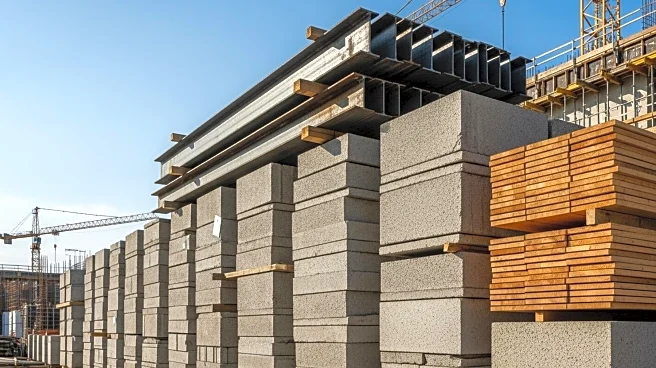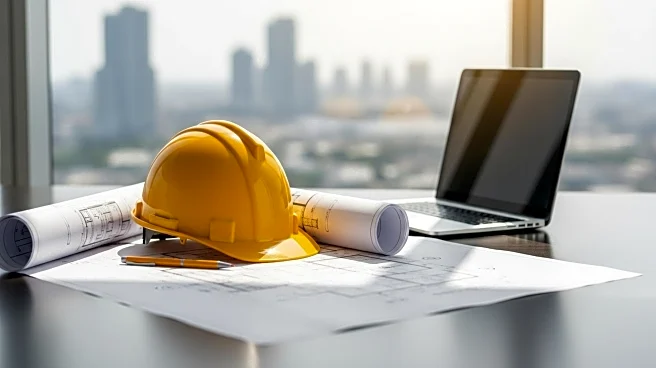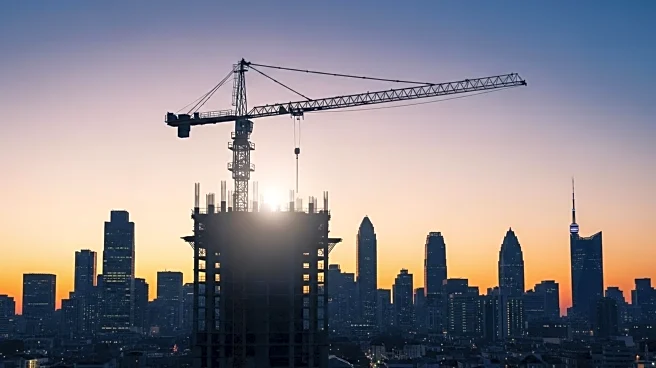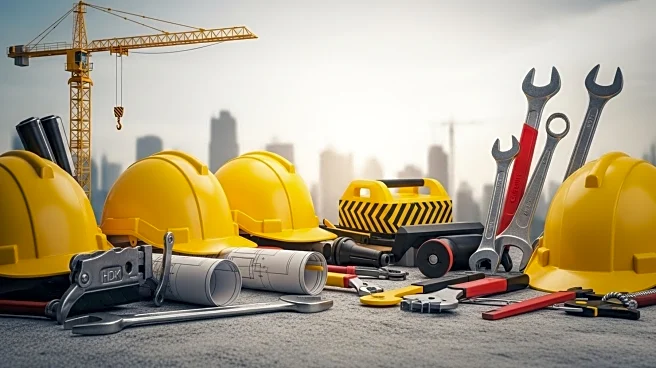What's Happening?
The construction industry is experiencing increased material costs, with a 0.2% rise in August driven by iron and steel price hikes. According to the Associated Builders and Contractors analysis of U.S. Bureau of Labor Statistics data, overall input prices are now 2.3% higher than last year, with nonresidential construction inputs up by 2.6%. Tariff hikes have contributed to volatility in material costs, prompting some project delays and cancellations. The Associated General Contractors of America reports that 43% of contractors have faced project cancellations or delays due to rising costs. Despite these challenges, contractors remain optimistic about profit margins, with some absorbing costs or negotiating cost-sharing with suppliers.
Why It's Important?
The rising material costs and tariff-induced volatility have significant implications for the construction industry. Contractors are facing increased pressure to manage costs, which could lead to tighter bidding and reduced profit margins. The situation underscores the need for resolution of trade disputes to stabilize prices and boost construction demand. The impact on project timelines and budgets could affect infrastructure development and economic growth, as construction is a key driver of employment and investment. The industry's response to these challenges will be crucial in maintaining its contribution to the economy.
What's Next?
Contractors are expected to continue facing material price increases, with nearly 40% anticipating further rises. The Trump administration's efforts to resolve trade disputes could play a critical role in stabilizing the market. The construction sector may need to explore alternative sourcing strategies and cost management practices to mitigate the impact of tariffs. Stakeholders will be closely monitoring trade negotiations and economic indicators to assess future market conditions.












